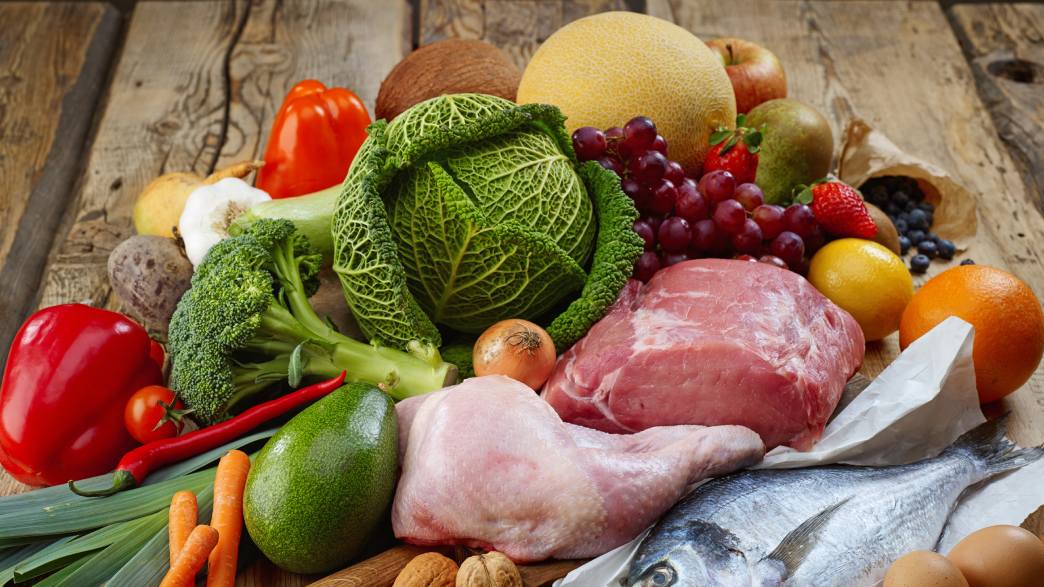5 reasons why a dietitian doesn’t recommend paleo (and how to adapt it)

The paleo or stone age diet, heralded as an easy way to weight loss, has the nutrition world polarised. Half love it, while the other half say it’s a modern fabrication and does not replicate how our ancestors ate.
Paleo cuts out any food that wasn’t available 10,000 years ago when organised agriculture began. This removes all grains, legumes (lentils, chick peas) and dairy plus anything else that came later, such as sugar and refined oils.
Many researchers dispute the paleo diet, arguing that both humans and foods have evolved since our caveman days so what we ate then has little bearing on the modern food supply. Those bright orange carrots you now buy, for instance, aren’t the same as the thin ugly carrots of days long gone. And their colour is recent – originally all carrots were purple or yellow in colour.
It's also important to note that the diet is not easy for vegetarians and almost impossible for vegans who rely on legumes and grains for their protein.
Here’s 5 good reasons why I don’t believe a conventional paleo diet is right for the over 50s:
1. It’s not balanced. You need a little carb from whole grains and legumes to fend off hunger and tiredness. This is especially true if you exercise – and you must for weight loss and good health!
2. It can quickly deteriorate into a carb-free regime as you eat no rice, potato, bread or pasta.
3. It eliminates the main source of calcium (in dairy such as milk, cheese and yoghurt) which you need for strong bones as you get older. Unless fortified, almond or rice milks are low in calcium and not a true replacement. While the life span of a paleo person was only 25 years, we now live until our 80s, an age that makes us prone to osteoporosis.
4. It removes the main source of fibre (grains, legumes) which you need for gut health and regularity with age. Not forgetting the body needs whole grains, which have proven health benefits like the 20 to 30 per cent reduction they create in lowering the risk of early death, heart disease, diabetes, stroke and some cancers.
5. It relies too much on meat with its environmental problems. Any meat eaten should be fresh whole cuts like steak (which is expensive) and not processed such as sausages, bacon and ham, which are so popular. Don’t forget you’re not eating wild beasts but domesticated sheep and cows raised using mass production methods, even if grass-fed.
What we can take from it
On the plus side, paleo removes all packet and processed foods so you’re eating little added sugar (honey is ok), salt, refined oils or additives. You cook from scratch using whole foods. You eat a nutrient-rich diet from vegetables, meats, fish, chicken, nuts, seeds and fruits.
Would paleo suit you?
Paleo works well if you need to shed weight and if you:
- Enjoy eating a higher protein intake from meat, chicken or fish
- Don’t snack between meals
- Dine out a lot. Simply order steak or fish and salad but skip the mash or chips.
- How to make paleo more realistic and balance
1. Add 2 serves of whole grains a day such as rolled oats, quinoa, buckwheat, millet, brown rice, pearl barley or grainy bread (dense chewy types, not the soft pappy square ones).
Remember our early ancestors DID eat wild grasses such as the wild rice harvested by American Indians – but not huge quantities and no refined flours. This could be as:
- ½ cup muesli or 1 bowl of porridge with added seeds AND
- 1 thick slice grainy toast OR
- ½ cup cooked quinoa or brown/black rice
2. Add 2 serves of fermented dairy foods a day such as:
- 1 150g tub yoghurt
- 1 200mL glass kefir (fermented milk)
- a thick 40g wedge of cheese
3. Add 1 serve of legumes a day such as
- ½ cup cooked beans or lentils OR
- 1 small 100g can of baked beans.
- Bottom line
- Use the paleo diet as a starting point then add in these whole grains, fermented dairy and legumes. Paleo favours weight loss due to its high protein content which is very satisfying and may increase muscle mass. But don’t forget that long-term balance and enjoyment are important. Know what you can stick to for longer than a week.
Further reading:
- Dietitians Association of Australia: The low-down on Paleo
- The University of Melbourne: Paleo diet: fab or fad?
- Grains and Legumes Nutrition Council: Grains and health
Written by Catherine Saxelby. Republished with permission of Wyza.com.au.
